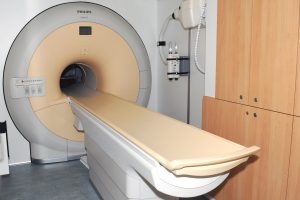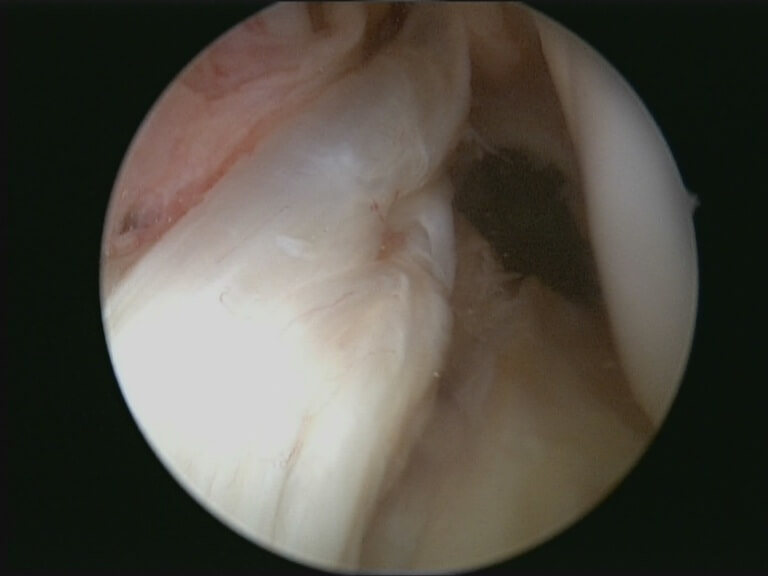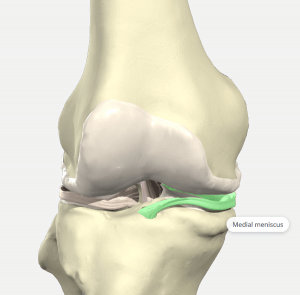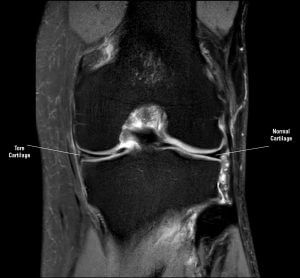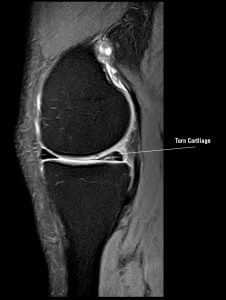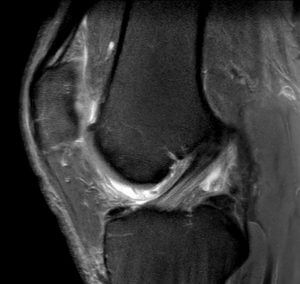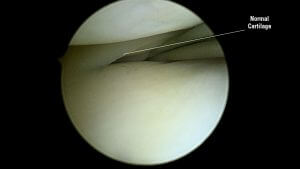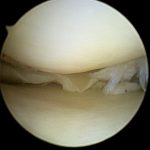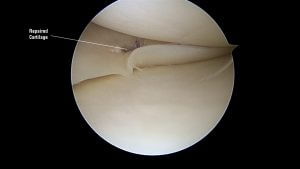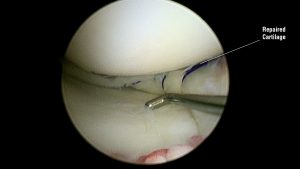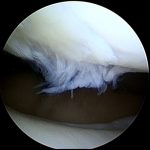Knee arthroscopy
WHAT IS ARTHOSCOPY?
Arthroscopy or keyhole surgery involves looking inside a joint cavity using a telescope and video camera. It is performed through a tiny incision, hence the name “keyhole” surgery.
It is a minor procedure, usually performed as day case surgery so you can go home the same day.
WHEN IS IT NEEDED?
Arthroscopy can be performed for a wide range of conditions. Some of the commonest reasons are:
- Torn cartilage e.g. a torn meniscus requiring repair
- Cysts of the meniscus or cruciate ligament
- Broken off small fragments of bone or cartilage floating in knee
- Cruciate ligament surgery
- Synovial biopsy (taking a tissue sample from the inner lining of your joint) to make a diagnosis
- Synovectomy (removing part or all of the inner lining of a joint)
- Chondroplasty (shaving rough cartilage flaps smooth with power tools)
- Microfracture (drilling holes in bare bone when overlying lining cartilage is lost. This creates a “superclot” in the crater and form new lining cartilage
WHAT ARE THE ALTERNATIVES
Not everyone with knee pain needs keyhole surgery and not every kind of pain can be improved with surgery!
I will use information from your history and examination. I will weigh up facts from your x-rays and if needed scans to tailor your management individually.
Some cases can be helped with physiotherapy while others may require cortisone (steroid) injection or medicines.
If you suffer from locking, jamming or a sensation of loose body in the knee…
If you have sharp pain with movement or inability to straighten the knee fully…
…you probably have a mechanical problem and arthroscopy is necessary.
WHAT HAPPENS DURING THE OPERATION?
The operation is carried out under general anesthesia (where you are put to sleep). I re-examine your knee to evaluate it. i then use a tourniquet to reduce blood supply to the leg. Once the leg is positioned, cleaned and draped, I make tiny incisions on either side of knee cap. I then introduce a telescope into the cavity of knee. I use saline to expand the knee cavity and carry out a detailed examination of the knee.
Depending on the condition, I may need to make an extra cut to access certain parts of the knee. Using different instruments like punches or shaver, I can trim cartilage tears and smooth off rough cartilage.
At the end of procedure, I use steri-strips or a skin stitch to close the wound and give an injection of long acting local anesthetic for pain relief.
RECOVERING FROM ARTHROSCOPY…
You will be given regular pain relief following the operation. You also will have some local anaesthetic in the knee during operation. This should ensure that you are comfortable during first few hours after surgery.
You may or may not need crutches. a physiotherapist will assess you and help you with exercises and mobility. You will need a responsible adult to take you home and look after you on the day of your operation. You must not drive, drink alcohol or operate machinery on the day of your operation.
You will have a wool and crepe dressing on the knee. this needs to be removed after two days. The small sticky dressings need to stay on until you come back to the clinic in two weeks time. You may need about two weeks off work following the operation. Some patients with desk job may return earlier to work.
ARE THERE ANY RISKS?
Knee arthroscopy is a very common procedure. It is safe and has quick recovery time.
Possible complications of this procedure include:
- Wound infection
- Developing clot in the leg (DVT) or clot breaking loose (PE)
- Bleeding
- Swelling
- Stiffness
- Incomplete relief of pain
Rarely there may be accidental damage to the inside of the joint, numbness around the knee or the surgery may not be successful and may have to be repeated.

